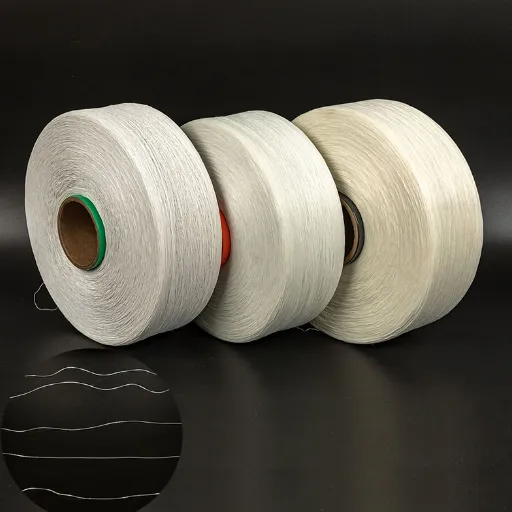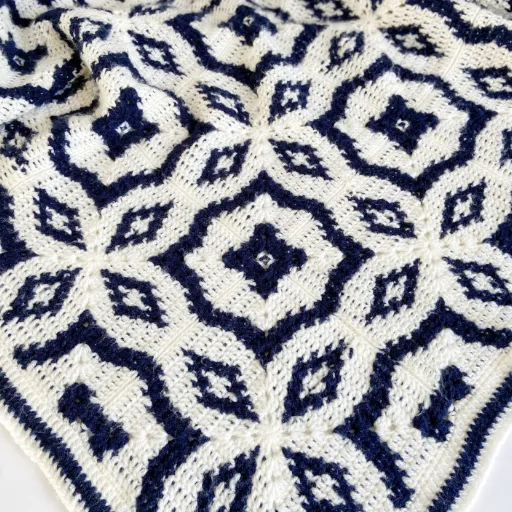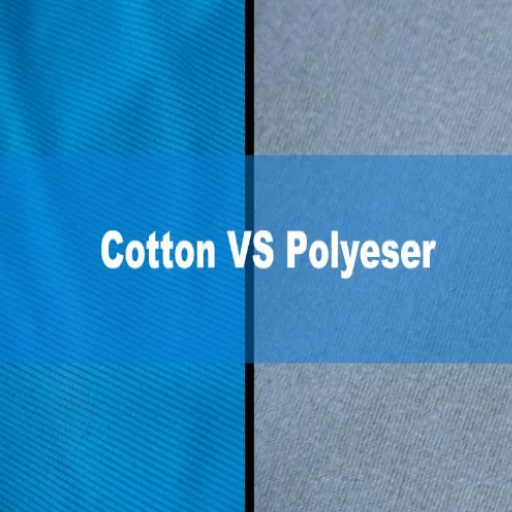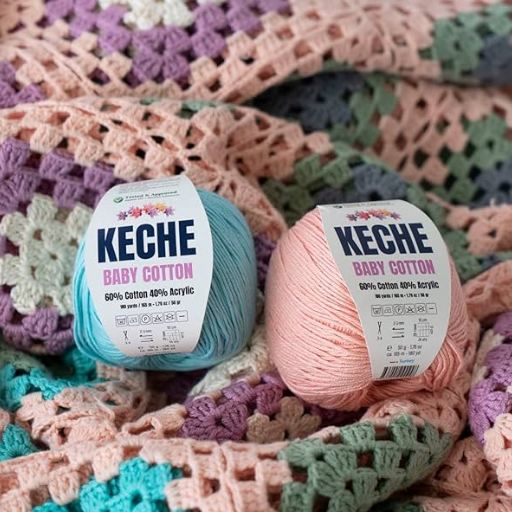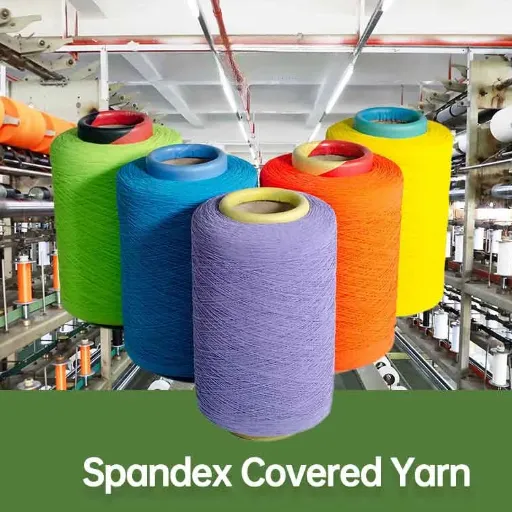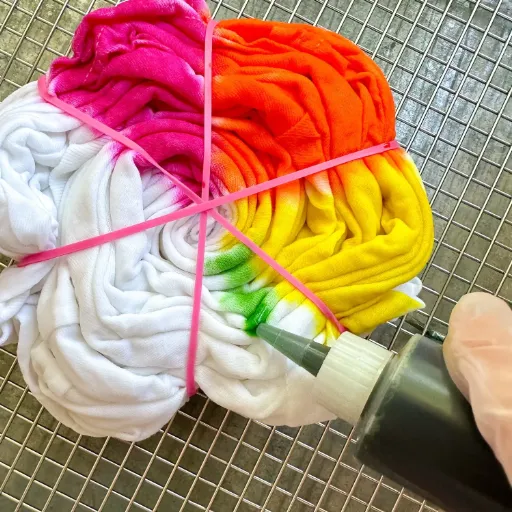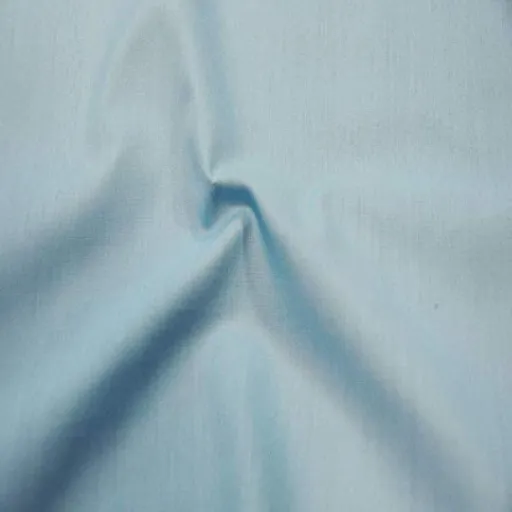In the realm of revolutionary materials within the textile sector, one of the most significant innovations is spandex covered yarn. This incredible material known for its extreme stretchability and adaptability has become the core of numerous fabric designs. The main reason is that it offers not only the functionality but also the aesthetics that have driven the developments in the industry. Spandex covering yarn has become a material of choice in every field starting from fitness fashion to medical textiles and offering a new experience of comfort, durability, and performance. However, the question is what exactly makes it so crucial? The forthcoming text shows the characteristics of spandex covering yarn, its different applications, and the reasons that it has become a part of everyday and specialist clothing. We invite everyone; whether you are a textile lover, a designer, or a curious reader, to accompany us on this journey of exploring the potential of this outstanding material.
Understanding Covering Yarn
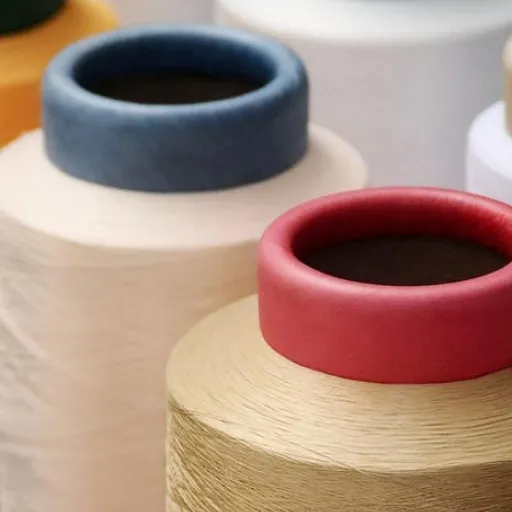
What is Covering Yarn?
Covering yarn is a material that consists of a fiber or filament (for example, spandex) wrapped or twisted with another yarn, usually made of polyester, nylon, or cotton. The main goal of this process is to achieve a product with enhanced properties by combining the core and outer yarns, and thus a product that is strong, elastic, and durable, that is to say, versatile.
The core part, which is usually a stretchy material like spandex, gives covering yarn the stretchiness and flexibility which make it very useful in different applications. The outer covering has, in contrast, the ability to impart texture, stability, and resistance to outside factors like abrasion or wear. This pairing thus strikes a balance between functionality and comfort making covering yarn an indispensable material in industries like clothing, medical textiles, etc. and even in some cases, industrial use.
Covering yarn is highly used in the manufacture of clothes like tights, active wear, and bathing suits where flexibility and comfort are very important. Its capacity to hold the shape and to give a snug fit that is not compromised by durability has made it a very common yarn in the world of textiles. By mixing aesthetic appeal with excellent performance, covering yarn is still a basic factor in the technological aspect of fabrics and materials nowadays.
Types of Covering Yarn: Single vs. Double Covered
Single covering yarn is made by wrapping around a core material just one strand of filament or yarn. It is the type of yarn that provides elasticity and flexibility to the fabric while still being smooth and comfortable. Single-covered yarns are commonly used in making hosiery, soft textiles and lightweight garments where moderate durability and stretch are adequate.
Double covering yarn uses two strands which are wound in opposite directions around the core. This not only results in a stronger and more stable yarn that will not fray easily and will keep its integrity even after being used for a long time but also the other way around. Double-covered yarns are thus the best choice for high-performance applications such as activewear, medical textiles, and other products that require exceptional durability and shape retention.
The final product’s properties dictate whether single or double covering yarn is chosen. Single-covered yarns are appropriate for projects with a need for high elasticity and a lightweight feel. Meanwhile, double-covered yarns are the ones relied upon for their great strength and long life making them suitable for tough uses. With this knowledge, manufacturers can adjust fabric properties to the specific application.
Core Yarn Explained
Core yarn or core-spun yarn is a kind of yarn that combines a core of the central material with a covering of staple fibers. The core material, usually elastic or strong fibers such as nylon, spandex or polyester, provides the yarn with its main functional properties like strength, stretch, or resilience. The outer covering made of natural or synthetic fibers usually enhances the aesthetic and tactile qualities of the yarn, such as softness or specific texture.
Core yarn is used to create a comfort that goes hand in hand with functionality in textiles. For example, the core yarns are used in activewear or stretch denim garments to provide elasticity and strength together with a nice and soft feel. The core yarn, by blending such different fiber properties, has managed to justify the high performance and the design demands in the case of various types of textiles.
Core yarn is such a resource for the manufacturers that they can implement it in such a way to get the desired qualities in fabric which cannot be produced by a single type of fiber alone. For instance, if spandex is used as the core material then it will definitely have elasticity but if cotton or polyester is used as a cover then the final product will have a soft or smooth finish. This versatile structure makes core yarn an indispensible tool in the textile industry, as it presents ingenious ways of satisfying varied end-user needs.
Properties of Spandex Covering Yarn
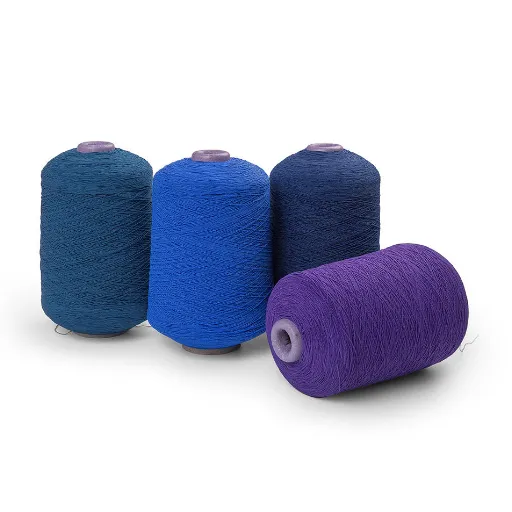
Elasticity and Stretch: The Role of Spandex
Spandex is one of the primary reasons behind the increase of elasticity and stretch in covering yarn. Spandex, which is known for its amazing elongation and recovery properties, is the main support of the fabrics and textile products needing that are needing the flexibility and comfort. The very same quality that makes it ideal for activewear, underwear, and generally all types of clothing that have to be “tight” yet “soft” is what makes it most desirable.
In the case of covering yarn, spandex works as the core, giving the fabric its resilience and stretch. Its stretch characteristic allows it to extend up to 5 times its original length and still not get broken, thus enabling the production of fabrics that can easily move with the wearer and still hold their shape. This adaptability creates not only resistance but also the comfort and freedom of movement of the wearer.
Moreover, the stretch nature of spandex helps the manufacturers to have their products delivered to different elasticity levels by changing the yarn composition. The mixing of spandex with other fibers results in a product that has all the stretch of spandex and the softness, strength, or texture of the covering material combined. This combination produces such diversified fabrics that they can not only be dictated by the needs of the functionalities but also by the aesthetics and thus can be used in different industries.
Durability and Performance Characteristics
Spandex fabrics are considered the best for durability and performance characteristics; thus, they are the best choice for different applications. The main strength of spandex is its elasticity, which makes the material stretch a lot, but it still holds its original shape. This ability to bounce back guarantees that the spandex-made garments are still fitting and comfortable after long usage, even if they have gone through repeating stretching or washing.
Moreover another important performance feature of spandex is its resistance to wear and tear. This material shows a combination of high tensile strength and resistance to abrasion which facilitating in prolonging the lifetime of the end products. Also, it is very resistant to body oils, sweat, lotions, and detergents thus keeping its integrity even after long use in active or everyday situations.
Spandex is also a good choice in terms of comfort because of its breathability and moisture-wicking features. It allows air circulation to a satisfactory level and also manages perspiration which latterly results in the wearer being dry and comfortable. Together, these features in durability and performance are the reasons why spandex is still a necessary material in industries like fashion, sportswear, and medical textiles.
Comparison with Conventional Covered Yarn
Spandex-covered yarn is elastic and comfortable all the way. On the contrary, spandex-covered yarn offers excellent elasticity and comfort in high-performance applications, which, due to its nature, is the best choice for such industries as sportswear and hosiery. Spandex leads to an excellent stretch and recovery property, which helps to retain garments’ shape over time and still give a snug and comfortable fit.
Another reason why spandex-covered yarn is preferred is its longevity. While conventional covered yarn may loose its strength after many washes or fade due to the friction of usage, the spandex yarn’s outer toughness will contribute to the longer life of the fabrics. This durability makes it particularly attractive in industries where the fabric goes through frequent washing or great physical strain, like athletic wear and compression garments. Besides, the ability of spandex-covered yarn to keep its properties under different conditions improves the quality and longevity of the product it is incorporated in.
In addition, spandex-covered yarn presents superior moisture control than the standard yarn. Its ventilation and moisture-absorbing properties allow the wearer to feel comfortable and dry, thus the garment is fit for longer wear. Such a situation is particularly true with the usage of the fabric in activewear and medical textiles, where controlling sweat and comfort are interrelated main concerns. All these advantages of spandex yarn make it more modern and practical than the usual alternatives in textile applications.
Textile Applications of Air-Covered Yarn
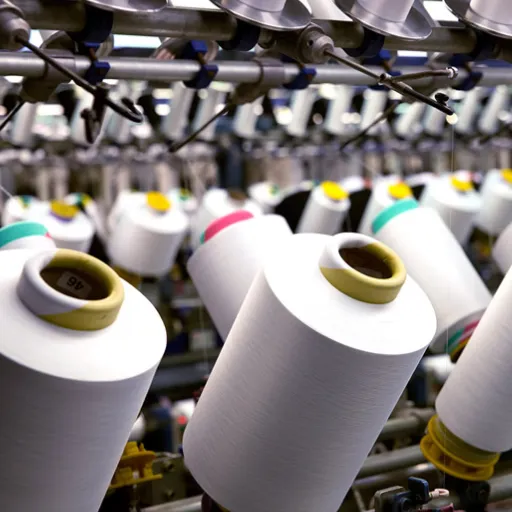
Application in the Clothing and Fashion Sectors
Air-covered yarn has become a classic in the clothing and fashion sectors due to its outstanding elasticity and durability. The different features offered by this yarn make it possible to use it in a wide range of garments like activewear, fitness clothes, underwear, and everyday clothes. The perfect alliance of spandex and other fibers is responsible for enhancing the comfort, stretch, and fit of the clothes, which are made to last for a long time without losing their original shape or functionality.
A prominent use of air-covered yarn in the fashion industry is its application in sportswear. Every such clothing, leggings, sports bras, and performance shirts, is taking advantage of air-covered yarn’s excellent stretch and recovery which give a supportive and breathable feeling during fitness activities. Such a thing is done by making the garments not only feel tight but at the same time let one move to the fullest, thus, targeting the energetic lives of the new-age populations.
On top of that, air-covered yarn is a common element in the making of hosiery and seamless garments. The reason behind its usage is its soft feeling and stretchability which are considered perfect for tights, socks, and shapewear, where wearing and fitting comfortably are important for the user. The material conforms to different body shapes without losing its properties, thus, providing both usefulness and style at the same time. This combination of qualities and high performance makes air-covered yarn a must-have in the clothing and fashion sectors.
Applications in Sportswear and Activewear
Air-covered yarn, with its elasticity, durability and comfort properties, is the major component in sportswear and activewear production. Fashion and fabrics for the active user must be functional and maintain their body shape, and air-covered yarn is there to meet those needs. The stretching power of air-covered yarn allows for snugness, and it also gives support during vigorous physical activity without feeling limited or compressed.
Also, its role as a moisture-managing textile is another aspect where air-covered yarn is a major contributor. The yarn causes the textile to be very airy, thus cool and soft to the wearer’s skin, which is very suitable for inner layers such as leggings, T-shirts, and compression garments. The material can be blended with other fibers to manufacture clothing for different climates, from performance winter wear to summer fitness clothes, thus ensuring proper temperature regulation.
Moreover, air-covered yarn helps the sports and activewear manufacturer to produce stronger garments that will keep their shapes and will not tear or wear out even after frequent washings and usage. The reliability of this performance is vital for the lifetime of the athletic activities that are physically demanding. Apart from that, the combination of comfort, flexibility ,and toughness has made air-covered yarn one of the modern-day activewear design necessities.
Home Textiles: Innovations in Yarn Production
Yarn production innovations have greatly changed the home textiles market, and have made it possible to produce more durable, economical, and also comfortable products. The modern yarn manufacturing processes are concerned with the strengthening of the materials, softness, and their versatility to accommodate different consumer needs. For example, one of the new improvements in spinning has made the yarn finer and smoother, and thus softer textiles are produced but with the same durability. These characteristics are very much appreciated in bedding, towels, and upholstery where comfort and durability are the most important properties of the product.
The first major improvement in this area is hybrid and blended yarns that are the mixture of natural and synthetic fibers. This mixture takes advantage of the good qualities of both the materials, for instance, combining breathing capacity of cotton and the toughness of polyester to produce economic and at the same time the eco-friendly textiles. Blended yarn is becoming more and more common in home textiles like curtains, carpets, and pillow covers, due to their good quality and functional properties. Communication of these materials with the end-user is also through the characteristic of being easy to maintain, requiring less washing and being resistant to fading or shrinking.
Sustainability has also come out as being very important in yarn innovation beside putting comfort and performance high at the top. To achieve the goal of reducing the environmental impact many manufacturers currently use recycled fibers or biodegradable materials. In addition, techniques like air-jet spinning and chemical-free treatment of the fibers have been introduced to lessen energy consumption and waste during the production phase. These developments make it possible to provide customers with good quality products that are also beneficial to the environment, as the home textiles industry will be practicing a more environmental-friendly approach. On the whole, yarn production innovations are changing the game in the home textiles industry, giving birth to products that not only meet but also exceed today’s shifting demands of comfort, performance, and sustainability.
Production Techniques for Elastic Yarn
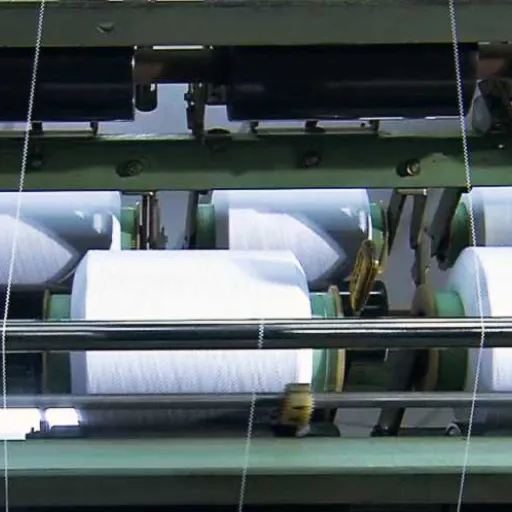
Manufacturing Processes of Air Covered Yarn
Air covered yarn (ACY) is made by merging a core yarn, frequently composed of spandex or elastane for stretchability, with a covering yarn, usually consisting of polyester or nylon, via high-pressure air jet. This method entangles the fibers of the covering yarn around the core; thus the product created is a lightweight, stretchable, and durable one that is suitable for various textile applications.
The process starts with first selecting yarns of top quality for both core and covering. They are then combined together and made to feed into the air jet. The air jet produces controlled bursts of compressed air that cause the covering yarn to wrap around the elastic core. The tension and air pressure are strictly controlled to ensure the final yarn has consistent texture, elasticity, and uniform appearance. The simplicity of this technique permits a continuous and efficient production process with the possibility of applying different setups based on the specific requirements of fabrics.
Precision and versatility are one of the primary advantages of air covered yarn production. Manufacturers can tailor yarns to have different levels of stretch, softness, and resilience by changing parameters that include the type of covering yarn, air pressure, or feed rates. Such adaptabilities make ACY a popular option among the textile creators who target industries like fashion, sportswear, and medical textiles that require comfortable and functional textiles.
Spindle Techniques in Yarn Production
In the production of yarn spindle techniques, the spindle is the rotating tool that fibers are twisted around, thus forming a strong and cohesive thread. The twist imparted by the spindle serves to hold the fibers together and at the same time increase the yarn’s durability and uniformity. This method has been utilized for centuries and has not yet been completely replaced with modern techniques as it still remains the most common way of fabric production.
One spindle method that is most commonly used is ring spinning which gives high-quality yarn that possesses excellent strength and smoothness. The production process involves drafting the fibers through rollers, and twisting them by a spindle that rotates at high speeds while a ring traveler guides the yarn onto a bobbin. The main advantage of ring spinning is that it is able to produce very fine and compact yarns that are suitable for a wide range of applications, including clothing and home furnishings.
Open-end spinning is another spindle-based method which does away with the spindle and bobbin. As a matter of fact, the fibers are drawn into a rotor where they are twisted at high speeds and then the finished product is wound onto a package. This method is characterized by its speed and efficiency in terms of cost, thus it has become the choice for coarse and medium-quality yarns that are used for making such items as denim, towels, and other durable fabrics. Both classic as well as modern spindle techniques are still of great importance in the textile industry when it comes to catering for its diverse needs.
Quality Control in Covered Elastic Yarn Production
Quality control measures in the production of covered elastic yarn are indispensable for the final product’s consistency, durability, and performance. The entire process starts with the selection of high-grade materials that comprise the elastic core and the covering fiber. Meticulous raw material inspections for defects like uneven strength, impurities, or irregular elasticity ensure that the production process gets off to a strong start.
Quality checks are conducted regularly during the whole production process to detect and correct such problems as uneven covering, weak adhesion between the core and covering material, and breakages. To keep the standard, key parameters like yarn tension, elasticity, and uniformity are monitored. Advanced technologies like automated testing equipment are employed to ensure accuracy and consistency in these measurements. The severity of supervision leads to a reduction in defects and delays, which could otherwise affect product reliability negatively.
Rigorous testing is done finally on the produced yarn to ascertain if it meets the industry standards and the customer requirements. This involves evaluating tensile strength, elongation, and wear and tear resistance. Strictly adhering to quality control measures and policies at every phase, the manufacturers can supply a product of high quality that can be used in various fields like medical textiles and everyday clothing, thereby securing customer loyalty through satisfaction and reliability in the long run.
Future Trends in Yarn and Textile Development
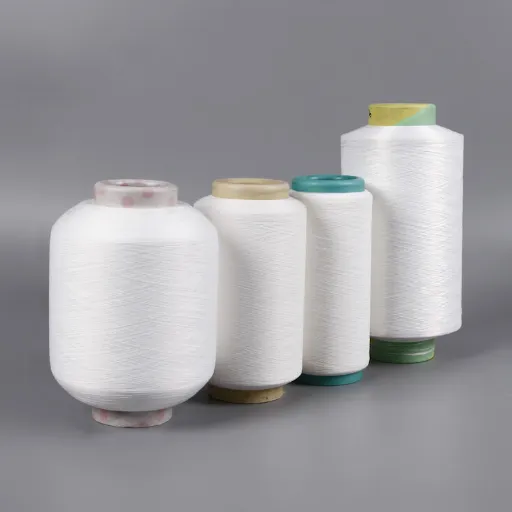
Emerging Technologies in Yarn Production
Yarn manufacturing, in the course of its life cycle, is continually taking on new and better technology more or less at its forefront and thinking to enhance the efficiency, sustainability, and versatility of textiles. The adoption of smart manufacturing technologies is one that has had a big impact, where automation and AI-driven systems are among the leading factors. These technologies enhance production processes by cutting down on human error and doing tasks like spinning, dyeing, and quality control with high accuracy. Automation also allows for real-time monitoring and adjustments, thus maintaining consistent product quality while reducing operational costs.
The other big trend to note is that of eco-friendly and sustainable practices taking over in yarn production. The use of recycled fibers and waterless dyeing are some of the techniques used to not only tackle but also to solve the environmental issues of high water consumption, energy use, and textile waste. Plant-based polymers are some of the inputs that biodegradable and bio-based yarns are made of, which is why they are becoming increasingly popular, as they offer textile solutions that will decompose naturally over time, hence having a smaller footprint on the environment.
Additionally, the use of nanotechnology in yarn production has been on the rise to improve the functionality of textiles. Yarns can be made stronger, more water-resistant, and have anti-bacterial properties through nanocoatings and embedded nanoparticles that are provided by this technique. This innovation is particularly useful for technical and performance textiles, thereby widening their use in various industries like healthcare, sports, and construction. All these new technologies, to some extent, indicate a promising change in the direction of yarn and textile manufacturing, which, beside being more efficient, will also be less harmful to the planet and more versatile.
Sustainability Practices in Covering Yarn Manufacturing
The sustainability practices that are implemented in the covering yarn manufacturing process are very essential in lessening the overall environmental impact of the textile industry. The use of eco-friendly raw materials such as organic cotton, recycled fibers, or biodegradable alternatives is one of the most important environmental measures. The consumption of resources is decreased to a great extent during the production of yarn, and pollution is controlled at the same time. In this way, a sustainable method of producing yarn is ensured. The manufacturers’ preference for renewable or recycled inputs results in an indirect contribution towards ecosystem protection and resources conservation.
Energy efficiency is of prime importance in yarn manufacturing sustainability practices. The electricity demand is effectively minimized through the adoption of various energy-saving technologies such as state-of-the-art spinning processes and well-coordinated machinery, while at the same time, high production standards are kept. Moreover, the adoption of renewable energy sources, besides electricity produced from fossil fuels, such as solar or wind, also reduces the carbon footprint of the manufacturing and production facilities.
Water conservation is yet another important area of concern as far as sustainable practices are concerned. The recycling and subsequent treating of wastewater from production can result in a huge reduction of the volume of wastewater released. In addition, the manufacturers are taking up innovations that consume less water, such as dry spinning methods or low-water dyeing techniques. The combination of these efforts will not only help the industry to limit its environmental impact but also to extend its operations toward more responsible and sustainable practices.
Market Trends and Consumer Preferences
The textile and apparel sector is going through major changes that are in line with sustainability and ethical practices. The use of eco-friendly products by consumers has increased significantly, and their demand for materials and methods that do not harm the environment has also increased. Such preferences have made it mandatory for manufacturers to come up with creative solutions such as recycled fabrics and energy-saving production methods that show the market’s interest in sustainable alternatives.
Moreover, the need for openness has become a critical element in consumers’ buying habits. The customers want to know the details of their goods starting from sourcing materials to the conditions of the workers who produced them. As a result, there has been an increase in certifications and labeling systems that assist consumers in recognizing the products that are made with ethical and environmental concerns taken into consideration.
On the other hand, price still plays a vital role along with sustainability. Although consumers do prefer green products, a large number of them are expecting those products to be available and sold at reasonable prices. This situation prompts companies to be innovative and to look for the right balance between cost-cutting and sustainability so that they could attract a larger audience and stay competitive in the changing market.
Frequently Asked Questions (FAQ)
Q: What is discussed as a covering yarn?
A: Covering is yarn where an outer strand is applied to the core, and this can provide very beneficial properties to the new yarn, namely elasticity, strength, and texture. This process is used in the textile industry for various applications, for sportswear, and stockings.
Q: How are they made into air-covered yarns?
A: The air-covered yarns are produced from an air cover-ing machine using compressed air, and good elasticity and softness are created by applying a yarn around the core. The resulting nature of the elastic yarn fiber enables it to suit itself to the manufacture of seamless garments.
Q: What are the benefits of these spandex-covered yarns?
A: Spandex-covered yarns have very high elasticity and good strength. It is highly suited for various types of knitwear, where elastic behavior is highly desired. Its performance can be further improved when combined with other fibers, such as polyester or nylon.
Q: What is some information about the fibers used that go into covered yarns?
A: There are various fibers commonly used to make covered yarns, variously expanded to include chemical, i.e. polyester, nylon, natural fibers, or synthetic, wool etc. The types of fibers affect the yarn’s characteristics, from stretch, smoothness, and other physical appearances, differently.
Q: Why can double-covered yarn be attributed to single-covering yarns differently?
A: Single covering yarn contains just one layer of an outer wrapping fiber applied to the core yarn while double covering yarn, just as its name suggests, is made up of two layers. It is typically endowed with good elastic properties and the greatest strength and thus, commonly used in aggressive applications.
Q: How might textile industries benefit by the use of covering yarn?
A: The existence of the covering yarns arms the textile industry with flexibility and freedom to completely design according to the need. It gives the option to the design and fashion industries to come up with diverse products that have the right functionalities like stretchability, texture, etc., essential to modern apparel.
Q: Can you use covering yarn in knitting and crochet?
A: Yes, it is suitable for both knitting and crochet. With its elastic properties and various textures, it has become a much sought after choice to be used in crafting comfortable and flexible garments. The yarn continues to hold its shape with stretch, i.e. very significant in the aforementioned crafts.
Q: What are the main applications for covered yarns?
A: These are mainly used in technical textiles, sportswear, and hosiery. Due to their flexibility and longevity, they are nearly perfect in their utility for garments needing movement and convenience; on the decorative side, some exotic textures can totally lift some fabric looks.
Q: How does the air-covering process affect yarn properties?
A: Actually, the function of the air covering process involves enhancing the properties of the yarn-such that it grows into elastic yarns that are naturally shaped and possess huge elongation. This method may also produce textured yarns-altogether making the fabric produced to relate to many applications with different functions.
References
- The Ultimate Guide to Spandex and Elastic Fabrics – This guide provides an overview of double-covered yarn, its applications, and its role in elastic fabrics.
- Covered Yarns for Industrial and Textile Applications – A detailed explanation of covered yarns, their composition, and their uses in various industries.
- Elastic Covered Yarn Lends Textiles More Flexibility – Insights into the flexibility and applications of elastic covered yarns.
- Conventional Covering Yarns: A Staple in Textile Manufacturing – Discusses the importance of conventional covering yarns in creating high-quality textiles.
- Covered Yarn: Combining Strength and Flexibility – A glossary entry explaining the structure and benefits of covered yarn in the textile industry.









